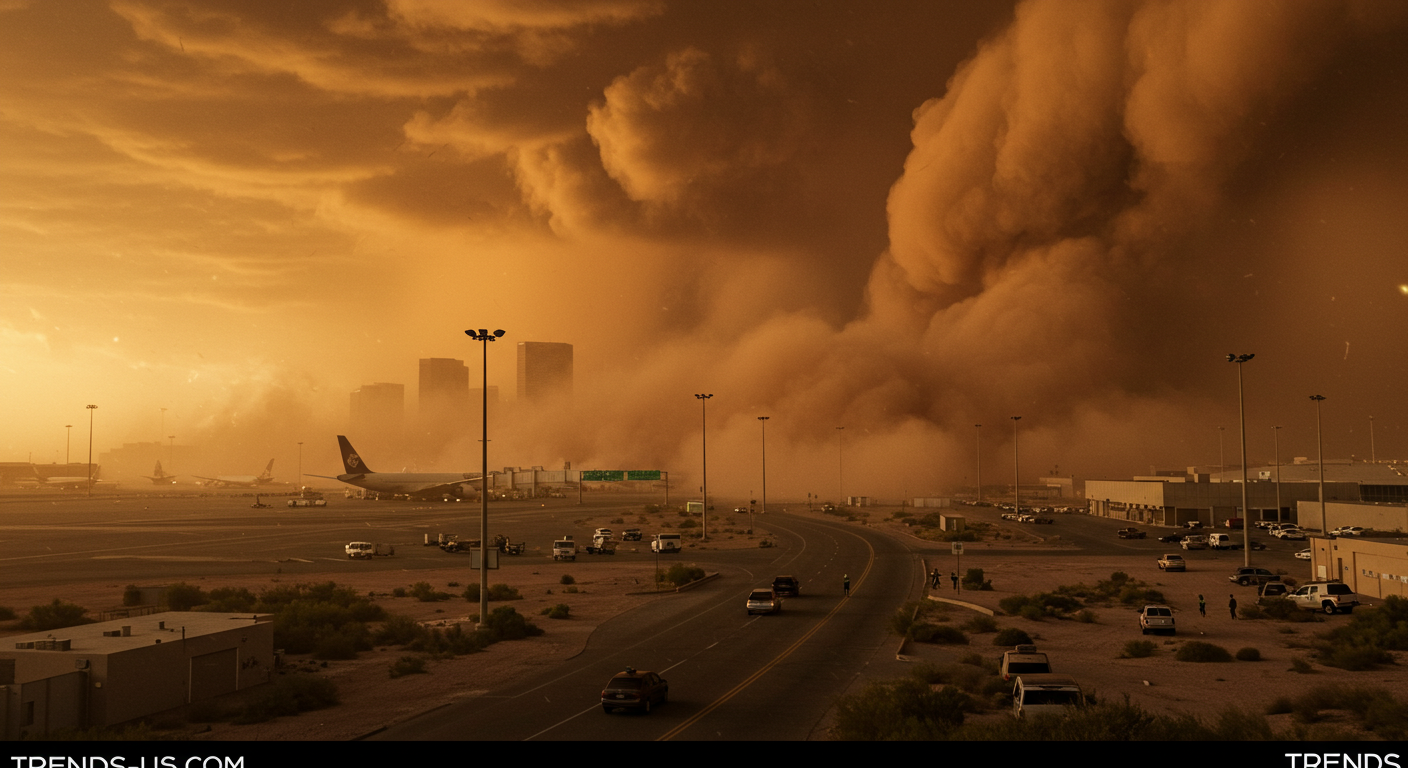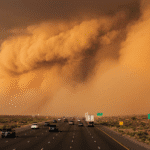Haboob Hits Arizona 2025: The Wall of Dust Disrupting Phoenix Flights and Power
What is a Haboob?
A haboob is a type of intense dust storm that primarily occurs in arid and semi-arid regions, driven by a downdraft from a thunderstorm. Characterized by a massive wall of dust and sand, haboobs can rise several thousand feet high and stretch for miles, reducing visibility to near zero. In addition to impacting air quality and visibility, they also pose significant hazards to aircraft, infrastructure, and daily life.
The 2025 Arizona Haboob
In early June 2025, Arizona experienced one of its most severe haboobs to date. Triggered by an intense summer storm system sweeping across the desert landscape, the phenomenon began gaining strength in areas surrounding Phoenix before making its way into the metropolitan area. The dust cloud rose ominously on the horizon, reaching heights up to 5,000 feet and spanning several hundred miles as it advanced toward the city.
Impact on Flights
As the wall of dust engulfed Phoenix Sky Harbor International Airport, visibility plummeted to less than a quarter of a mile. Airport officials implemented emergency procedures, including the suspension of all takeoffs and landings to ensure the safety of passengers and crew. Hundreds of flights were delayed or canceled as airlines scrambled to reroute incoming planes to alternative airports, including those in Tucson and Flagstaff.
The effects were not limited to just passenger flights; cargo flights were also heavily disrupted. The port serves as a significant hub for shipping operations, and the disruption in logistics had immediate ramifications for industries reliant on just-in-time deliveries.
Ground Travel Disruptions
In addition to air travel issues, the haboob caused extensive challenges for ground transportation. Major highways around Phoenix, including the I-10 and I-17, faced significant low-visibility conditions, forcing law enforcement to temporarily close key routes. Motorists were urged to pull over and wait out the storm, contributing to traffic congestion on streets that were not affected.
Power Outages Across Phoenix
The haboob was accompanied by powerful winds, prompting physical damage to power lines and infrastructure. Utility reports indicated that thousands of customers found themselves in the dark as trees were uprooted and electrical poles were toppled. By midday, electrical outages affected nearly 50,000 residents in various parts of Phoenix and its suburbs.
Utility companies like Arizona Public Service (APS) mobilized crews to restore power, but crews faced challenging conditions to make repairs. The dust storm made it difficult to ascertain the extent of the damages, delaying restoration efforts. Residents were left without power during scorching summer temperatures, leading to an increased demand for generators and backup systems to maintain essential services.
Health Issues Associated with Haboobs
Health officials in Arizona cautioned residents to remain indoors during the dust storm. Exposure to high levels of dust can exacerbate respiratory illnesses like asthma and bronchitis. The Arizona Department of Health Services (ADHS) issued advisories urging citizens to stay hydrated and avoid outdoor activities.
Residents suffering from allergies were particularly vulnerable, with pollen and dust mixed into the dry air, leading to higher incidences of allergy-related symptoms. Hospitals and clinics experienced an uptick in patients seeking treatment for respiratory issues, coinciding with the haboob’s impact.
Preparedness Measures and Lessons Learned
In the wake of the 2025 haboob, city officials emphasized the importance of preparedness for future dust storms. The National Weather Service (NWS) and Arizona state agencies are working collaboratively to enhance public awareness and emergency response plans.
Improved digital communication systems were recommended to ensure timely alerts about impending dust storms. Furthermore, on the technological front, various mobile applications were developed to provide real-time updates and safety instructions, improving public readiness for hazardous weather events.
Future Implications of Climate Change
The increasing frequency and intensity of haboobs in Arizona are closely linked to changing climate patterns. Due to rising temperatures, prolonged droughts, and altered precipitation patterns in the Southwestern United States, scientists predict that extreme weather events like haboobs may become more commonplace.
Researchers are investigating how these changes impact public health, air quality, and water supply, particularly in major cities like Phoenix. Continuous monitoring of atmospheric conditions and better predictive modeling will be fundamental for managing these environmental challenges moving forward.
Community Response and Resilience
The aftermath of the haboob highlighted community resilience in the face of natural disasters. Local organizations and volunteer groups quickly mobilized efforts to assist families without power. Food banks provided essential supplies to those in need, ensuring that vulnerable populations received vital resources during the crisis.
Furthermore, community leaders are advocating for more robust infrastructure investments. Efforts are underway to implement dust suppression technologies and green initiatives aimed at minimizing the impact of future dust storms on urban life.
Conclusion
The 2025 Arizona haboob served as a stark reminder of nature’s power and unpredictability. From massive disruptions in air travel to the challenges posed for residents and infrastructure, venturing into a rapidly changing climate requires both awareness and preparedness. The lessons learned from this event will play a pivotal role in shaping effective responses to future climatic events.



